Your cart is currently empty!

Raising Monarch Butterflies with Children
Monarch butterflies, with their beautiful vivid orange wings with wide black borders are considered by some to be the “king of butterflies” (hence the name). Monarch butterflies can be found across North America, but are facing issues due to their roosting sites being threatened by development and loss of the trees that create the unique conditions required by these butterflies. The good news is that you can help! Today, Cape Cod mom of two, Lissy Perna is here to show you just how easy (and important) it is to help the monarch butterflies. She’ll show you how to raise them from caterpillars, as well as give you facts about the butterflies and other suggestions for how to help them thrive. With the help of this detailed guide, you’ll be saving the monarchs in no time!

Raising monarch butterflies with children
Have you ever seen photos of children holding bright orange monarch butterflies or families enjoying the process of raising and releasing these delicate animals? Well, I’m here to tell you that you can raise monarch butterflies with your children too! And it’s a great way for the whole family to get involved in nature, conservation, and science. It’s a simple, inexpensive, and beneficial process that’s important to the sustainability of the monarch species. Here are your step-by-step instructions and family-friendly guide for raising monarch butterflies with kids.
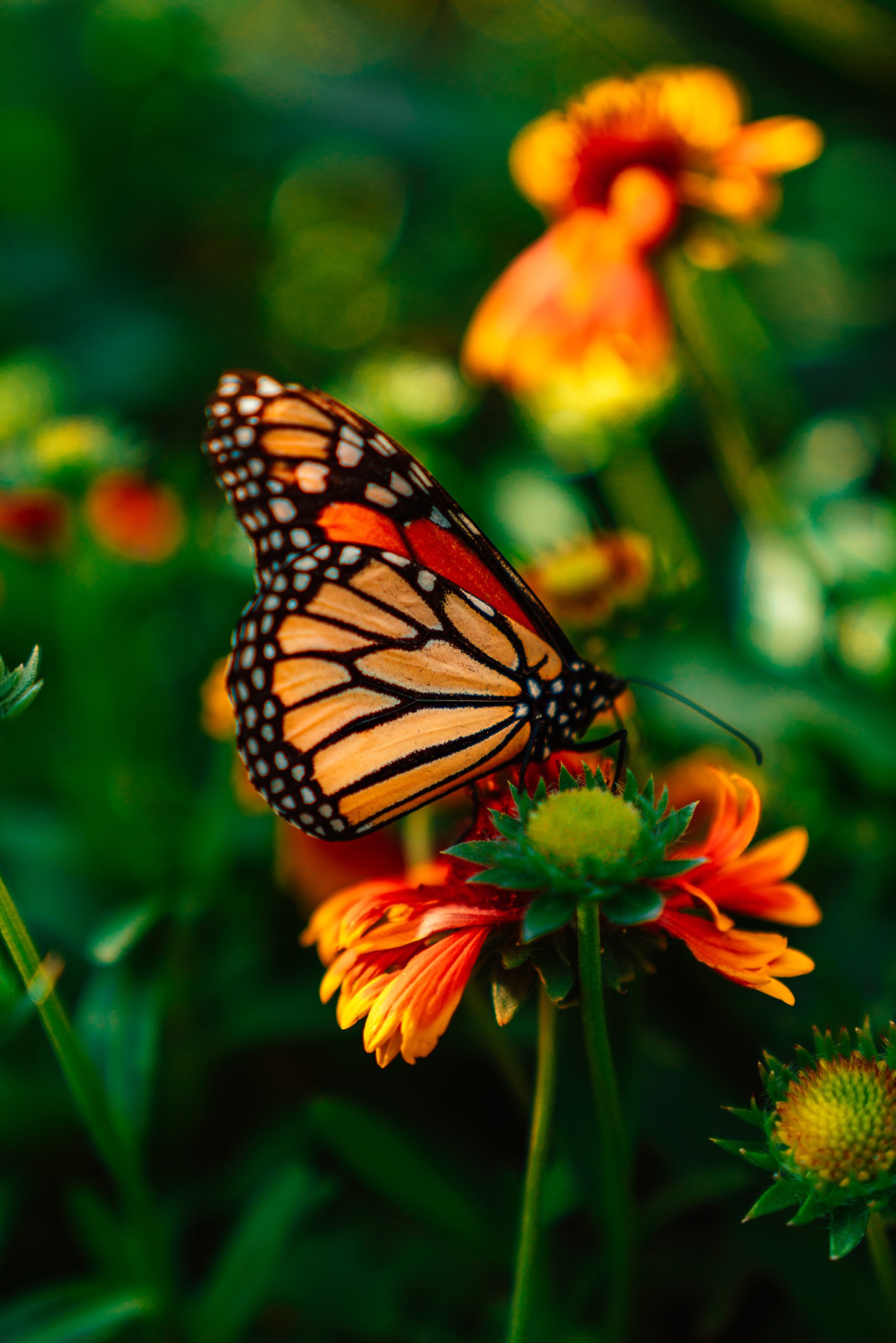
Monarch butterfly facts for kids
- The monarch butterfly’s proper name is Danaus plexippus (Linnaeus, 1758)
- The upper side of a male monarch is bright orange with wide black borders and black veins. The upper side of a female monarch is orange-brown with wide black borders and blurred black veins. Both sexes have white spots on the borders and apex.
- Monarchs can be found from southern Canada south through the United States, Central America, and most of South America. Monarchs are also present in Hawaii, Australia, and the Pacific Islands.
- Monarchs live mainly in open habitats including fields, meadows, marshes, and along roadsides.
- Monarchs feed on nectar from milkweeds. Milkweed contains poisons that are distasteful or toxic to birds and other predators. After tasting a monarch, a predator learns to associate the bright warning colors of the adult or caterpillar with an unpleasant meal, and avoid eating monarchs in the future.
- Monarchs make a 3,000-mile journey each year, migrating between Canada and Mexico. These monarchs return each winter to roosts in the hills of Michoacan, Mexico, where they gather by the millions.
Lifecycle of a monarch butterfly
Before you raise monarch butterflies, encourage your child to learn about the monarch butterfly life cycle.
The life cycle of the monarch butterfly has four stages and four generations. The stages are (1) egg, (2) larvae, (3) pupa, and (4) adult butterfly. “Four generations” means four butterflies passing through these four stages within a year.
The previous generation’s adult butterfly lays eggs on the milkweed, when stage one of the first generation starts. Within 4 days, the eggs hatch to form a caterpillar or larva, the second stage. At this stage, the larvae eat the milkweed on which it lives.
Within two weeks, it attains full growth and attaches to someplace like a leaf or stem by discharging silk, and undergoes the process of metamorphosis to transform into a pupa or chrysalis. Over the next 10 days, the continuous process of metamorphosis transforms the old body parts of the pupa into the beautiful parts of the future adult butterfly. The adult butterfly will emerge and fly away in search of food and a mate.
First-generation monarch butterflies live a short life that ranges from two to six weeks. Within this period, it will lay eggs for the second generation. The second generation flies roughly one month after the migrating monarchs arrive and reproduce which would be anytime from May through July. It lays eggs for the third generation in July or August.
The fourth-generation process is almost the same except for one point. The fourth-generation eggs are laid in the month of September or October, but they live more than eight to nine months. This fourth-generation butterfly also has a specialty; it migrates to the warmer regions of California or Mexico.
*Source – www.saveourmonarchs.org

The importance of the monarch butterfly
Monarch butterflies are pollinators. Pollinators like monarchs play a vital role in the natural ecosystem and our food system. As pollinators, the monarch butterfly migration across the continent provides an invaluable service, essential for many ecosystems to thrive. It is thanks to pollinators, such as butterflies, bees, and other insects, that we have many of the flowers and dietary staples that we enjoy.
But monarch butterflies and their migration are now threatened by temperature changes, drought, deforestation, development, and other impacts. The loss of milkweed plants (due to eradication, urbanization and increased use of herbicides), loss of winter habitat, and climate change are all pushing monarchs to the brink. The monarch butterfly is now a candidate to be listed as endangered under the Endangered Species Act.
Does it help the species to raise monarch butterflies in captivity?
In nature, monarchs are prey to various predators, and only ten percent of monarch eggs in the wild make it to the butterfly stage. Ants, wasps, birds, spiders, and other insects have easy access to the little eggs and consume them regularly. Even without the threat of predators, bacterial and viral diseases are also ever-present and cause widespread damage. In addition, tachinid flies prey on the soft chrysalis’ that house the transforming monarchs. Raising monarch butterflies with your children in captivity can help protect these eggs and ensure they are safely brought into adulthood and help the recovery of the monarch butterfly population. It’s one little thing we can do with our children to help make a difference.

Reasons to raise monarchs with children
Many children learn best from hands-on experiences, and the process of raising a beautiful butterfly (from egg to caterpillar to butterfly) is a perfect example of that type of education. It’s a great backyard project for kids that’s not expensive, but has huge benefits for both the animal and the child.
One of my favorite quotes by an unknown author exemplifies this, “Because little nature lovers grow into big nature lovers.” Children are the future, and their attention to wildlife protection is crucial. Introducing them to this type of experience makes them more likely to care for wildlife once they are adults. Your children can play a big part during the monarch-raising process, and the lessons learned will be invaluable. Raising butterflies from eggs and the entire process will be a delight (and valuable learning experience) for your young nature enthusiast.

What you need to get started raising monarchs with children
You don’t need too much when it comes to raising monarchs, and it’s not a huge investment (but there is a huge payout and benefit). Here are the supplies you should gather:
- Butterfly enclosure
- Cotton swabs
- Paper towels
- Spray bottle with clean water
- Small clean, shallow plastic container with the top (sandwich-sized)
- Magnifying glass (optional)
- An abundance of milkweed plants, not treated by any chemicals

Finding milkweed for monarchs
The first step in raising monarch butterflies with children is to find live monarch butterfly eggs and a food source for your caterpillars. Luckily, monarch butterflies will always lay these eggs on the leaves of milkweed plants (usually on the underside of the leaves), which is also their main food source. With a keen eye, you can easily spot these tiny eggs. The globular whitish-yellow eggs are only .9 to 1.2 millimeters long.
How to identify milkweed plants to search for monarch eggs
The presence of milkweed is extremely important to the monarch. Milkweed leaves are the only food that monarch caterpillars eat. Adult butterflies also lay their eggs on the back of milkweed leaves.
There are multiple milkweed species, and this plant grows in many climates and habitats. You can often find milkweed growing alongside fences, on the sides of roads, or in ravines. Key characteristics of common milkweed (Asclepias syriaca) are:
- flower color ranges from pink to white, highly fragrant
- milky sap when leaves/stem broken
- fine hairs on the underside of leaves—soft and velvety!
- mature leaves are typically quite broad
Milkweed fruits or pods are easy to identify although their size and shape can vary. Once they are mature, the pods split longitudinal and release the seeds within. The seeds are dispersed by wind so they are light and fluffy.

Types of milkweed plants
- Common milkweed
- Butterflyweed
- Swamp milkweed
- Antelope-horns milkweed
- Purple milkweed
- Showy milkweed
- California milkweed
- White milkweed
- Whorled milkweed
- Mexican whorled milkweed
- Desert milkweed
- Green milkweed
These are just some of the milkweed plants native to North America. If you want to plant milkweed at your home, please be sure you choose a native species, as they are the healthiest for your monarchs and the local environment.

Collecting monarch eggs from milkweed
Once you locate an egg on the underside of milkweed leaves, gently remove the leaf and place it in a clean container, egg side up, and secure the lid. Please do not touch the egg; even a gentle touch may harm it. We like to line these containers with damp paper towels to keep the environment moist.
Depending on your comfort level, you may want to start with only a few eggs. Your first time raising monarch butterflies will teach you so much about the entire experience and what works (and doesn’t). Once you are familiar with the process, you will know if you can take on more tiny caterpillars in the future.
When harvesting anything in nature, always make sure you have permission to remove the leaves from these plants. A friend’s garden (or your own garden) would be the best place, followed by wild areas where responsible foraging is permitted. If you don’t know where to find milkweed, but want to help the caterpillars, you can plant and grow it yourself. Make sure that the plants you harvest are from areas with no chemical spraying, including pesticides or other harmful applications.
Also, before taking an egg or young caterpillar home, it’s important to have a source nearby that you can use to feed your growing caterpillar. Once your small caterpillar hatches from its egg, it will need fresh milkweed for its main food source. For your convenience and their health, make sure you have a nearby milkweed patch to serve as your source of fresh food.

Caring for your monarch eggs
Monarch caterpillar eggs hatch three to eight days after being laid. So, you’ll want to keep a close eye on the eggs in your care. First, you will want to keep your closed container in a safe place. We keep ours on the window sill in our bathroom- away from curious dogs and cats. Natural light is best, but not in direct sunlight. Next, check on your eggs daily to give them fresh air and clean off any mold forming. Then, lightly mist the leaves with clean water from your spray bottle to moisten the environment.
A monarch egg hatched; what do I do now?
Success! The first egg has hatched! Now, what do you do?
Well, not much for the first few days. You will see an extremely tiny (less than one-tenth of an inch!) yellow caterpillar chewing on its eggshell. Once the caterpillar has eaten its shell, it will start to chew on the surrounding milkweed for food. Monarchs stay in this caterpillar stage for ten to fourteen days, growing every day. They move through stages called instars; there will be five in total!
This stage is a great time to break out that magnifying glass for your children to better view these miniature, hungry caterpillars. But don’t worry, they won’t stay tiny for very long! They grow at an incredibly rapid pace. Very hungry caterpillar, indeed!

Move small caterpillars to a butterfly enclosure
When your monarch caterpillars are small, this stage is ideal for moving your container into the mesh butterfly enclosure. An enclosure will keep your caterpillars safe from predators and allow you and your young children to observe them easily. You can take off the lid once you have the container inside the mesh enclosure. Remember to keep these enclosures somewhere safe; you don’t want them to knock over.
The size of your enclosure should determine the number of caterpillars you can safely house. Because we wanted something large and very sturdy to last us years, my father built us a wooden butterfly house out of scrap wood and an old screen, loosely based on styles we found online. If you would like a wooden house, here are a few options. Although, the inexpensive mesh ones work perfectly fine as well. You might want to purchase or construct a more permanent butterfly house, because raising monarch butterflies with your children is so fun!
Here is a wooden enclosure on Etsy that is very similar to mine. This is an aluminum mesh butterfly enclosure I found on Amazon. A pop-up mesh cage also works just fine.

How to clean your monarch caterpillar container
As your caterpillar grows, it will be consuming more and more milkweed. And what goes in, as we all know…must come out. You’ll want to keep your enclosure clean, so here’s how to take care of the waste.
First, you will need to remove the poop or frass that accumulates on the leaves and the bottom of your container. The best way to do this is with a cotton swab. You can gently wipe it away from the milkweed leaves to give your caterpillar a clean living environment. Then, as they grow even larger, you will need to throw out the damp paper towel lining your container and replace them at least once a day. The frass can range in color from dark green to dark brown and will vary in size depending on the size of your caterpillars.

Instar stages of your monarch caterpillars
As mentioned previously, monarch caterpillars move through five stages before fully growing. These stages are called instars. First, the caterpillar grows (from eating the healthy milkweed you are providing) and becomes too big for its skin. After that, they shed their black skin through a molting process, and sometimes, they even consume their shed skin after the molting is complete. This molting process is fascinating; the caterpillar will almost vibrate and shake to remove its skin. If you happen to witness this stage, feel honored! It’s a quick process but is so crucial in their growth.
During the instar stages, the caterpillars will be eating quite a bit of milkweed. Make sure to provide enough milkweed leaves to keep them satiated. They will eat all of the leaves, leaving only the stems behind. As the caterpillars grow bigger, see if you can hear them munching. It’s louder than you’d expect! Isn’t that fascinating!

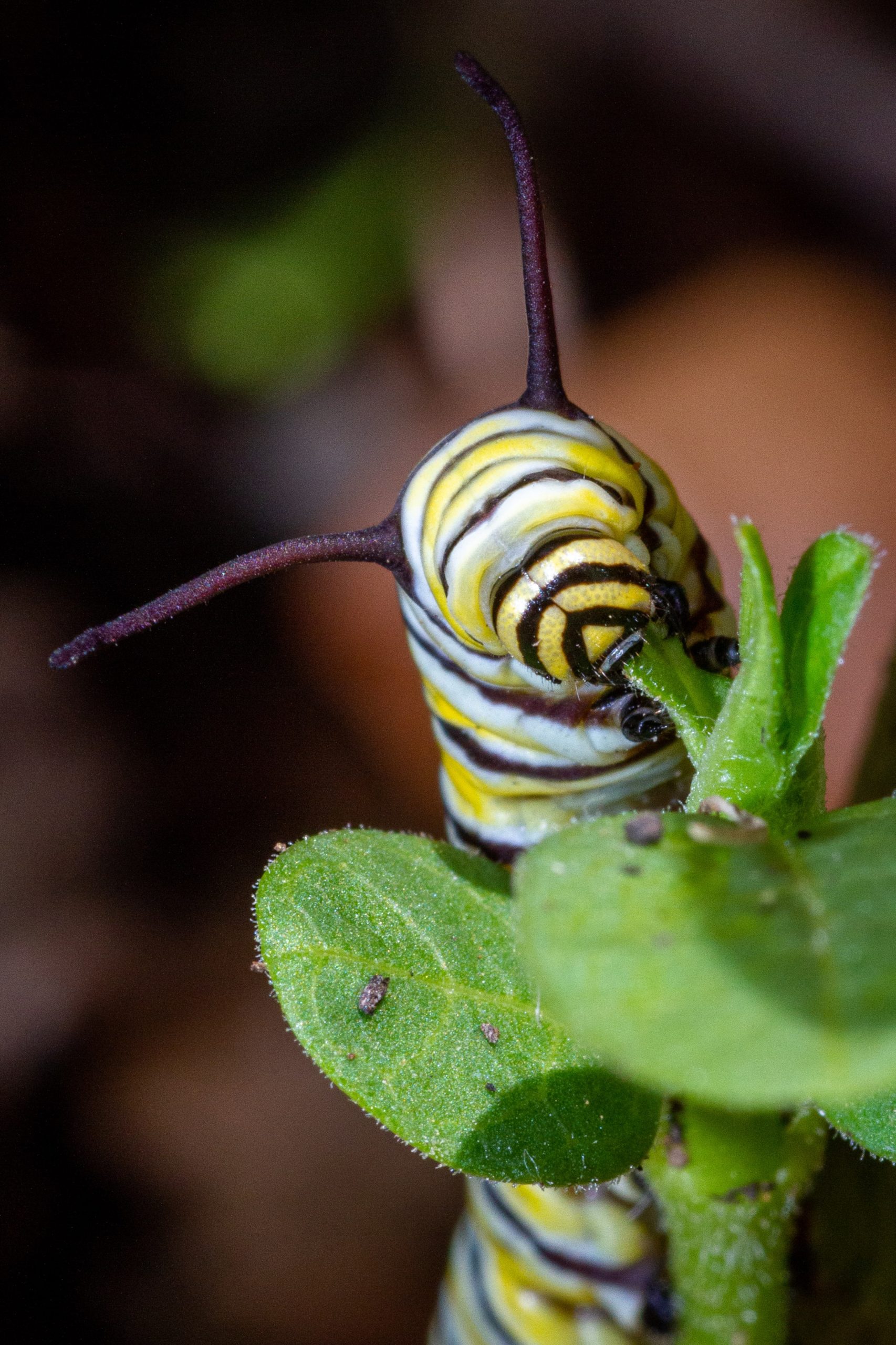
Sizes of monarch caterpillars at each stage
- First instar: 2-6mm
- Second instar: 6-9mm
- Third instar: 10-14mm
- Fourth instar: 13-25mm
- Fifth (and final!) instar: 25-45mm
It takes ten to fourteen days to complete these five instar stages.
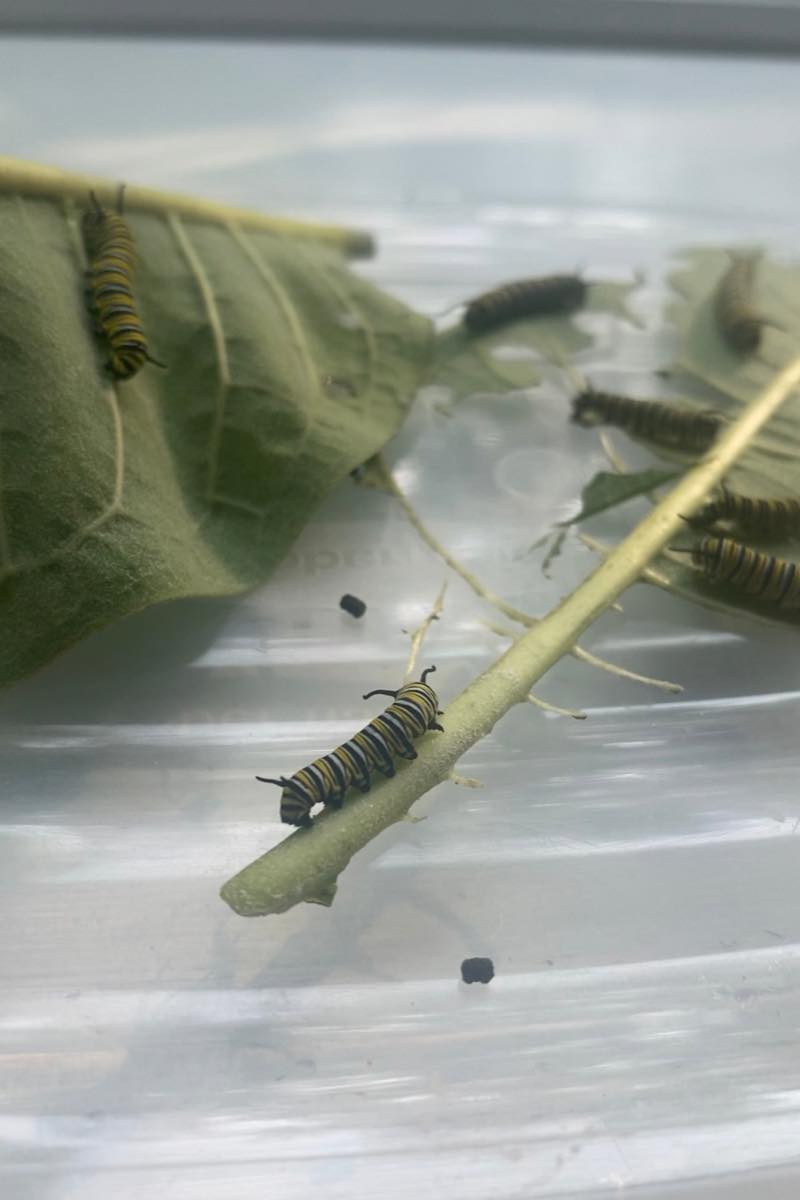
Preparing for pupa
The next stage in our monarch caterpillars’ life is their pupa stage. This stage is when the caterpillar transforms from larvae to the monarch butterfly. The length of this stage is anywhere from ten to fourteen days.
Once your tiny caterpillars reach full size, their eating will slow down a bit and they’ll get ready for metamorphosis. When your monarch caterpillars are ready to form their chrysalis, they will climb to the top of the butterfly enclosure.
First, they will create a silk patch from their tail end to the top of the enclosure’s roof. Then, they will hang upside down in a “J” shape. Keep an eye on them once they do this, as it means they will form the chrysalis within twenty-four hours! I have noticed that right before they move into the pupa stage and are in “J” formation, their antennas will go limp, and their bodies will straighten out a bit. At this point, it will be only minutes until the transformation starts.


Larvae to pupa, the amazing transformation
Watching a larva pupate is fascinating and bizarre – it’s a true miracle in the natural world and to witness one is absolutely incredible! It goes rather quickly (or at least faster than you might expect), so timing is critical. You have to be paying very close attention to know it’s coming and be ready!
First, the top layer of skin splits, and the green chrysalis becomes visible. The monarch caterpillar then expands and contracts until the outer layer of skin falls off, and the chrysalis is fully formed. Notice the tiny gold dots along the edge of the chrysalis. Once this happens, try not to touch the chrysalis and just let it be.
You do not have to do anything during this period except keep the chrysalis out of reach of predators. After eight to ten days, the butterfly will be ready to emerge. You will be able to tell that it is nearly time to come out because you can see the monarch’s wings through the exterior shell of the chrysalis.

Monarch emerging from the chrysalis
When the butterfly is ready, it will emerge from the chrysalis. It will hang upside down for a few hours after coming out, its tiny sticky feet clinging to the broken shell of its chrysalis. If you happen to see a butterfly fall to the floor of the enclosure, gently scoop it up and allow it to re-attach to the chrysalis or the roof of the pen.
While hanging upside down, the butterfly will pump its wings, allowing the fluid from its body to flow to the wings so they may fully expand. You may also notice the proboscis, or tongue-like appendage, rolling and unrolling from their mouth.
The wings need this time to dry to fly safely and effectively; this process usually takes three to four hours. Once the monarch starts fluttering around your enclosure, and it has been at least three to four hours, you can set it free.


Resources to help you on your monarch-raising journey
When we first started raising monarchs, we used a local Facebook group as a resource. I would ask the group any questions I had about locating milkweed, the setup of my butterfly enclosure, or the behavior of the monarch caterpillars. You may have a group local to your area, but if not, there is a national one called The Beautiful Monarch.
Of course, there are always books to reference; here are some of my favorite resources that you can purchase online or check out from your local public library:
- Raise Your Own Monarch Butterflies, by Annie Carrol
- Raising Monarchs, by Sue Fox McGovern
- Raise Healthy Monarchs at Home, by Jeanne Megel
- A Tutorial for Raising Monarch, by Doria Karrenberg

How else can you help monarch butterflies?
Raising monarch butterflies with your children is a great way to help the monarch population recover, but there are other ways you can help, too!
- Plant a pollinator garden in your own backyard. Include native plants in your area that are either host plants such as milkweed, or nectar plants for the butterflies to feed on, such as nasturtiums, zinnias, or cosmos. Here’s a great tutorial on how to plant a butterfly garden with your kids.
- Share the word! Now that you are an expert on these beautiful creatures, share that information with your friends and family. Then, maybe they will start raising monarchs with their children!
- Please donate to the non-profit Save Our Monarchs, which is committed to saving monarch butterflies and serves as a great resource for any monarch enthusiast. Find out how at www.saveourmonarchs.org.
- Fight climate change. The monarch’s innate urge to migrate is based on temperature changes that come with the seasons. Unfortunately, climate change has affected these temperatures, and the continued shift threatens their population.
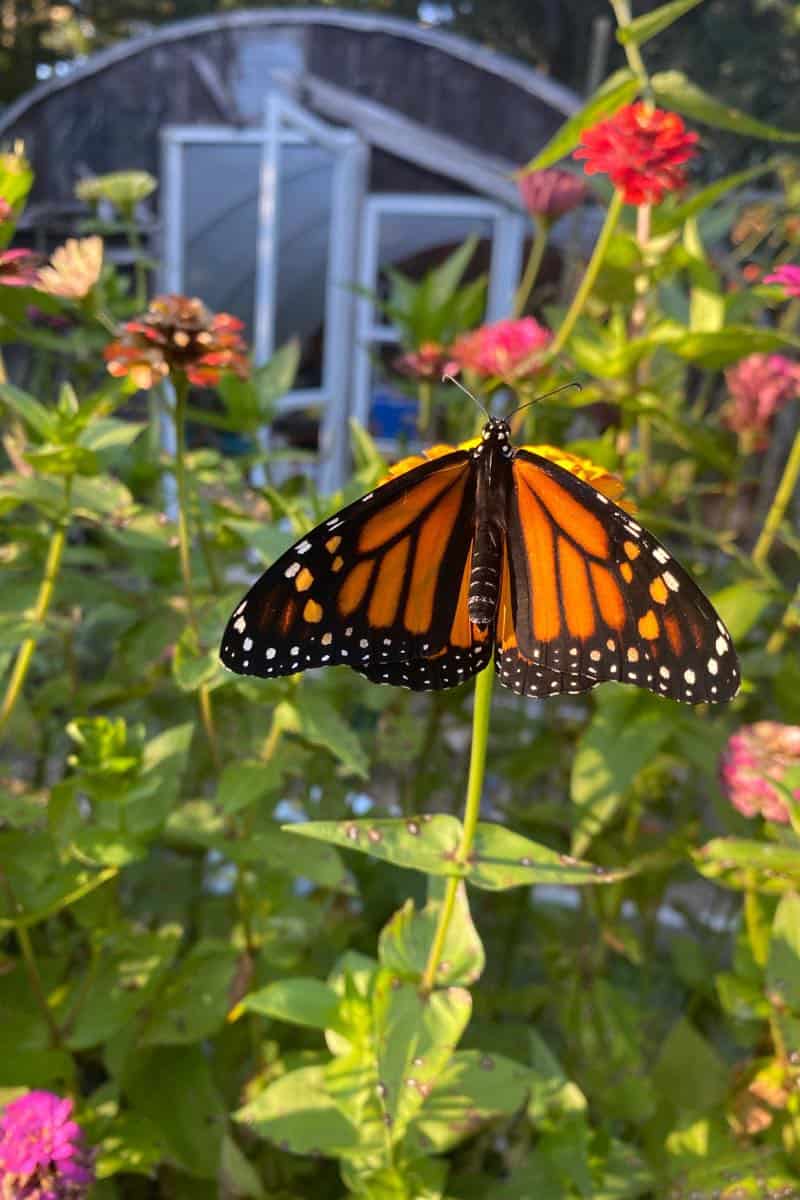

Have you ever raised monarch butterflies with kids?

About the author
Lissy lives near the ocean on Cape Cod, Massachusetts with her husband, 2 rambunctious boys (aged 4 & 7), and an ever-growing number of pets. She grew up walking nature trails and finding joy in the beauty of nature. She now shares that love for local adventures with her community through her blog, “Get Outside Cape Cod”. Lissy knows that everyone can benefit from spending more time outdoors, and wants to inspire and support families to do just that!
You can find more from Lissy in the following online locations:
Instagram: @getoutsidecapecod
Website: Get Outside Cape Cod
Facebook: @getoutsidecapecod
RWMC Posts: Lissy Perna
Comments
5 responses to “Raising Monarch Butterflies with Children”
[…] following is extracted from a very informative and important site called (Breeding monarch butterflies with children). There is much more useful information from this expert […]
[…] following is extracted from a very informative and important site called (Breeding monarch butterflies with children). There is much more useful information from this expert […]
[…] following is taken from a very informative and important site, called (Raising Monarch Butterflies With Children). There is much more useful information provided by this mother who is an […]
Hi. I have rescued a deformed Monarch ( wont ever fly as wings are bent) How best to feed it? So far its been having honey and water, also apple, banana and peach watered down. Its doing really well so far. Is there anything else I could do please.
[…] Raise a monarch (One further: document its development with a monarch journal) […]

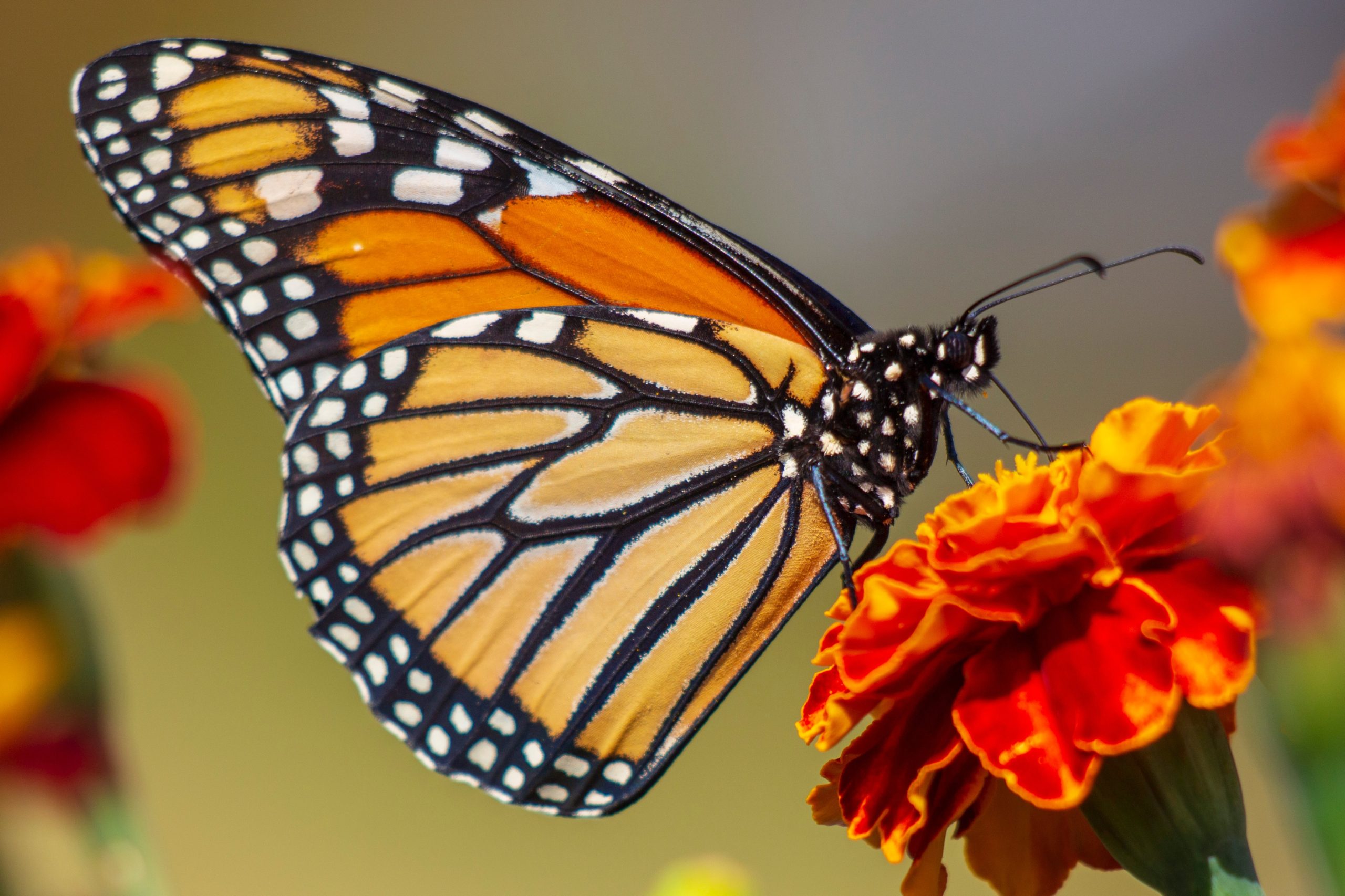
Leave a Reply